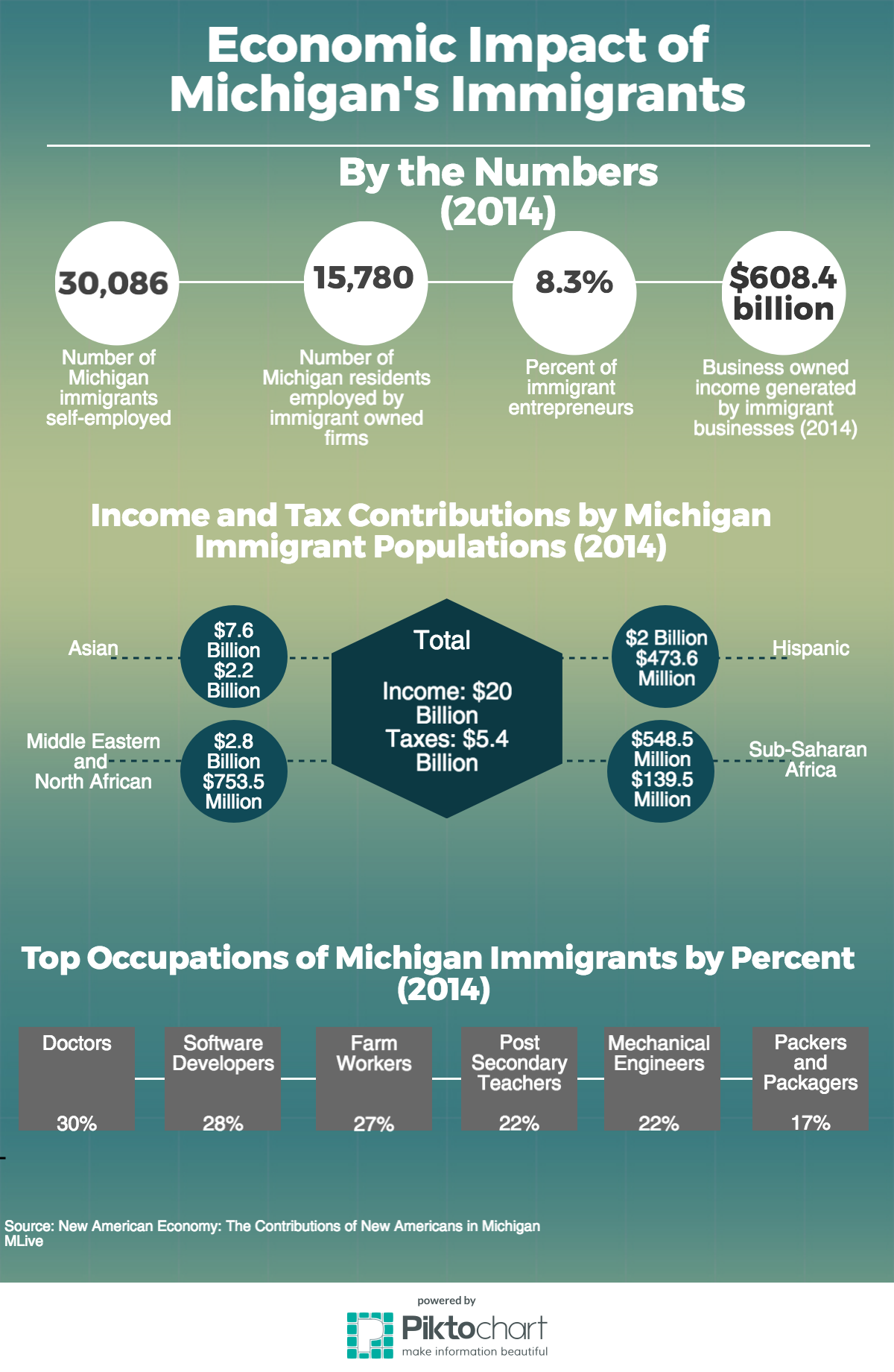With about 6.5 percent of Michigan’s population being comprised of foreign-born residents (an increase from 3.8 percent in 1990) their contribution to the economy is evident. From running their own businesses and employing non-foreign born residents to filling in gaps in the work force, a 2016 study by New American Economy shows just how much the immigrant population in the state contributes to the overall economy.
According to the Census Bureau, about 6.5 percent of Michigan’s population is made up of immigrants. Of that population, those that come from Asia make up majority of the foreign-born population at 50.7 percent and those that come from Northern America (Canada, Mexico, Caribbean) made up one of the smallest segments of the population at 5.3 percent (Oceana made up .5 percent).
As shown in the infographic, of Michigan’s immigrant population, 30,086 of them were self-employed in 2014, and 8.3 percent of the immigrant population were entrepreneurs. Additionally, 15,780 Michigan residents were employed by immigrant owned firms and $608.4 billion of income was generated by immigrant businesses, according to the 2016 New American Economy report “The Contributions of New Americans in Michigan.”
Through immigrant population employment, in 2014 there was about $20 billion in income generated and $5.4 million in taxes generated (total-combined federal and state). Asian immigrants contributed the most in income and taxes, according to the report. In 2014 Asian immigrants generated $7.6 billion in income and $2.2 billion in taxes ($574.9 million went to state and local taxes), the Middle Eastern and Northern African population generated $2.8 billion in income and $753.5 million in taxes ($213.1 million went to state and local taxes), the Hispanic population generated $2 billion in income and $473.6 million in taxes ($167.5 million went to state and local taxes) and the Sub-Saharan Africa population generated $548.5 million in income and $139.5 million in taxes ($44.9 million went to state and local taxes), according to the report. Not only did Michigan’s immigrant population contribute to federal and local taxes, but also to entitlement programs. In 2014, Michigan’s immigrant population contributed $507.5 million to Medicare and $1.9 billion to social security.
According to the report, 30 percent of Michigan’s doctors, 9,150 people, were foreign born. Software developers came in second at 28 percent (7,474 workers), followed by farm workers (27%-7,762), post-secondary teachers (22%-12,880), mechanical engineers (22%-10,502), packers and packagers (17%-3,507), computer systems analysts (22%-3,152) and food-service managers (14%-5,310). In total, the percent of immigrant workers employed in a Science, Technology, Engineering and/or Mathematic (STEM) field was 15.3 percent, according to the New American Economy report. The report also points out how there is a shortage of STEM workers in the state, with 10 jobs being available for every one employable worker.
The information presented in this post provides a broad economic overview on the contributions of Michigan’s immigrant population. To learn more about these contributions on everything from how Michigan’s student immigrant population plays a role in the economy to how age plays a factor in economic growth for the foreign-born and non-foreign born populations, please read the whole report here.
Source: http://www.renewoureconomy.org/wp-content/uploads/2016/10/nae-mi-report.pdf

